Take a file folder, add all types of multi-sensory, hands-on activities that teaches a single subject and ‘voila’ you have a lapbook. These compact, tote-able books are lap-size (hence the name), and are perfect for flat storage, retrieval, and travel. There are 8 effective ways that I use lapbooks in our homeschool and at church, as well as in therapy and as a communication tool.
8 Effective Ways to use a Lapbook
Lapbooks are as diverse as the people who create them – and the topic possibilities are as endless. Subject information is broken down into bite size pieces, and added to interactive pockets, mini-books, cards, accordion fold-outs, matching games, and other various forms of activities. These creative books are perfect for special needs kids because they can learn about the subject, reinforce it while helping make the lapbook. Afterwards they have a visual, interactive reminder about what they learned. I think of lapbooks as the educational version of scrapbooking. Here are 8 effective ways to use a lapbook:
1. Introduce a New Subject
Lapbooks are an effective way to introduce a subject and are a nice break from textbooks and worksheets. When Andrew was in first grade he became infatuated with Cheetahs, so I created a lapbook and filled it with facts and photo cards. He would spend hours in the car playing with the different aspects of the folder and chatting about all things ‘Cheetah’.
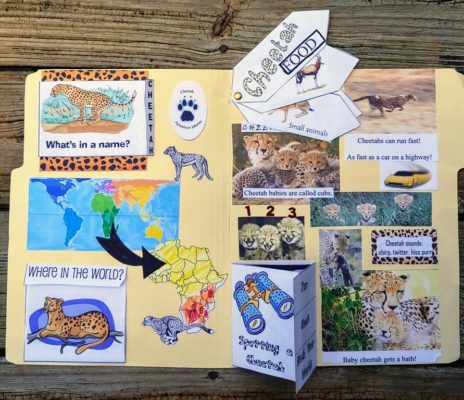
2. Review Past Topics
I find that lapbooks not only help Andrew retain and review information from our studies, but they also become refresher visuals long after the subject of study has ended. Here is one of our first lapbooks on Zebras. While the information is geared towards early elementary, Andrew still likes to go through the pockets. It also encourages him to look up more age-appropriate information, which gives him a chance to do independent research on his own. For this particular lapbook, I gave Andrew a roll of painter’s tape and some black paint and asked him to add stripes. Some of the paint got on the inside pages, but that’s okay! He had fun, and it gave him some ownership of the work that went into the lapbook.

Speaking of Reviewing Subjects with Lapbooks…
Here is our review for our Gymnosperm Biology Segment. Andrew enjoyed the unit but then could tell me very little until we created this lapbook. We definitely have an issue when it comes to memorization and communication. (I love lapbooks!) Check it out in our Digital Product Section: The Fascinating Gymnosperm Lapbook. It contains an extra centerfold that folds up into the lapbook for storage.
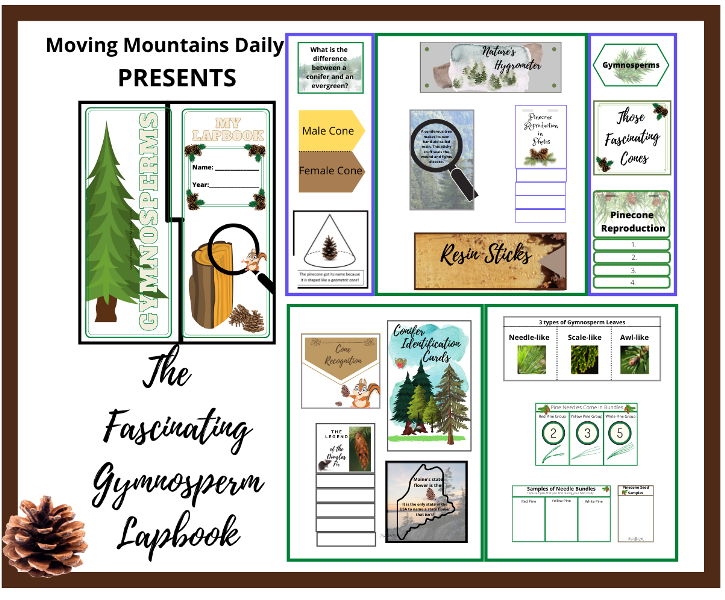
3. Using Lapbooks to Expand a Story
Charlotte Mason’s Five in a Row Curriculum (FIAR), takes a single living book and expands the subject matter based on the story. Andrew read a book called “The Story of Ping“. It is an awesome living book about a domesticated duck, on the Yangtze River, in China, who tries to avoid punishment for being late. Using FIAR, we expanded the story to include an in depth study of China, it’s people, and ducks.
After reading the Story of Ping, Andrew learned how to find China and the Yangtze River on a map (map skills). Then we discovered what sights we would see in China (history/geography), and what cultural differences we might find (culture/writing/monetary system). We included a section (science) on types of ducks, their habits, life cycle, and what they eat. All these expanded subjects went into our Story of Ping Lapbook by way of fans, fold-outs, pocket pictures, as well as glue and paste flip books. I don’t think I have ever covered a picture book so thoroughly!
Not familiar with living books from the Golden Age of Literature? Read about living books here: Powerful Lessons from Living Books.
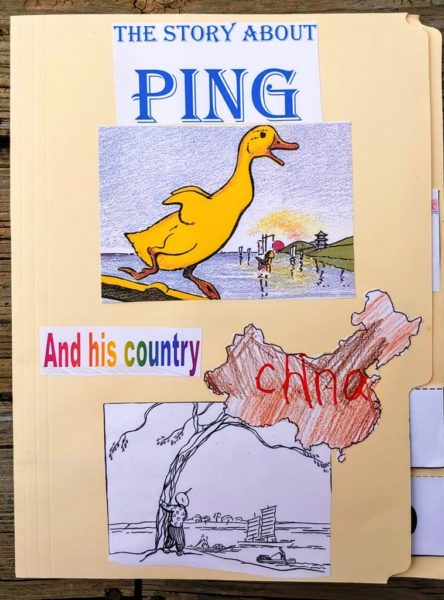
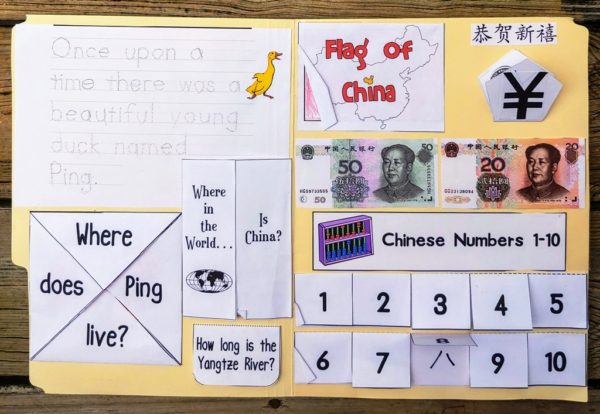

4. Lapbooks as a Communication Tool
I created this Scouting Lapbook as a communication folder for Andrew who has a difficult time memorizing a large amount of words. He can take his communication file and follow the oath at scouts, or practice at home. It can also be taken to the Scoutmaster’s Board of Review to help him answer questions and keep in organized and on-track. Scouting has lead to lapbooks that include skills and various merit badges.
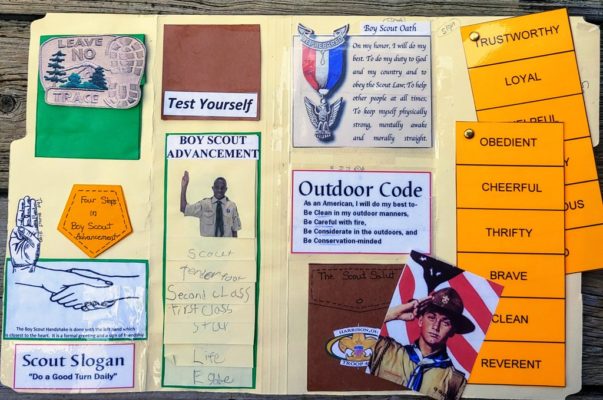
5. Therapy Lapbooks
I don’t always feel confident enough to make the lapbooks that I need for school. There are some subjects that need to be left to the professionals. I found this articulation lapbook on-line. While it is meant for therapists, such a topic can be helpful to homeschool parents who have special learners. Since then, I have used Kiwi Speech products exclusively in school and follow the blog.

6. Lapbooks as a Reference Tool
Sometimes it helps to refresh one’s memory when a subject, like English, Math, or Spelling has a lot of rules to remember. This lapbook continues to be a great refresher for plurals, as it allows Andrew to practice sorting words into ‘s’, ‘es’, or ‘ies’ categories. This is an effective way to use a lapbook for yearly reviews, and for grabbing last minute when you realize there’s a problem and you need to reinforce the rules. There is a drop down pocket to store the word cards. When finished, the pocket folds up and once the lapbook is folded in, the cards cannot escape.

7. Game-schooling or Puzzle Lapbooks
Gameschooling is popular with some homeschool families who recognize the importance of learning by play. We have used lapbooks to encourage taking turns (Life Skills), adding scores (Math), and recognizing dice patterns (Math). The puzzle game in the photo below requires the players to read a fact and then distinguish if it pertains to President Washington or President Lincoln. Sometimes, I add in dice for scores or a timed scavenger hunt. There’s a back pocket to store puzzle pieces.

I think my all time classroom favorite was when my 4-6 grade Chemistry Class played Battleship using the Periodic Elements. I added too many battleships which meant the kids were blowing up ships right and left. My more competitive players let me know that it was important to make the opponent search for a ship. Oops! On the other hand, half the class was happy with me.
8. Painted Lapbooks for Visuals
Sometimes the most effective way to create a visual is to paint a lapbook. I used the Ocean layers lapbook for my 1-3rd grade science classes. You can see how painting the ocean scene created a visual for the students. It was important to relay the fact that the ocean became darker with depth. The students independently researched the type of animals that they would find in that section of the ocean and pasted them to the corresponding layer. The small booklets on the side state facts about each layer.
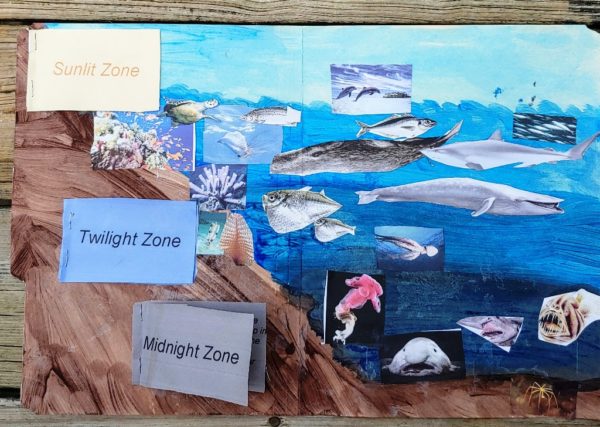
Creating a Lapbook
There is no wrong or right way to creating a lapbook. They are as unique and varied as the people who create them. However, even for the avid scrapbooker, a lapbook can be intimidating at first. The key is to choose a subject and then just start!


